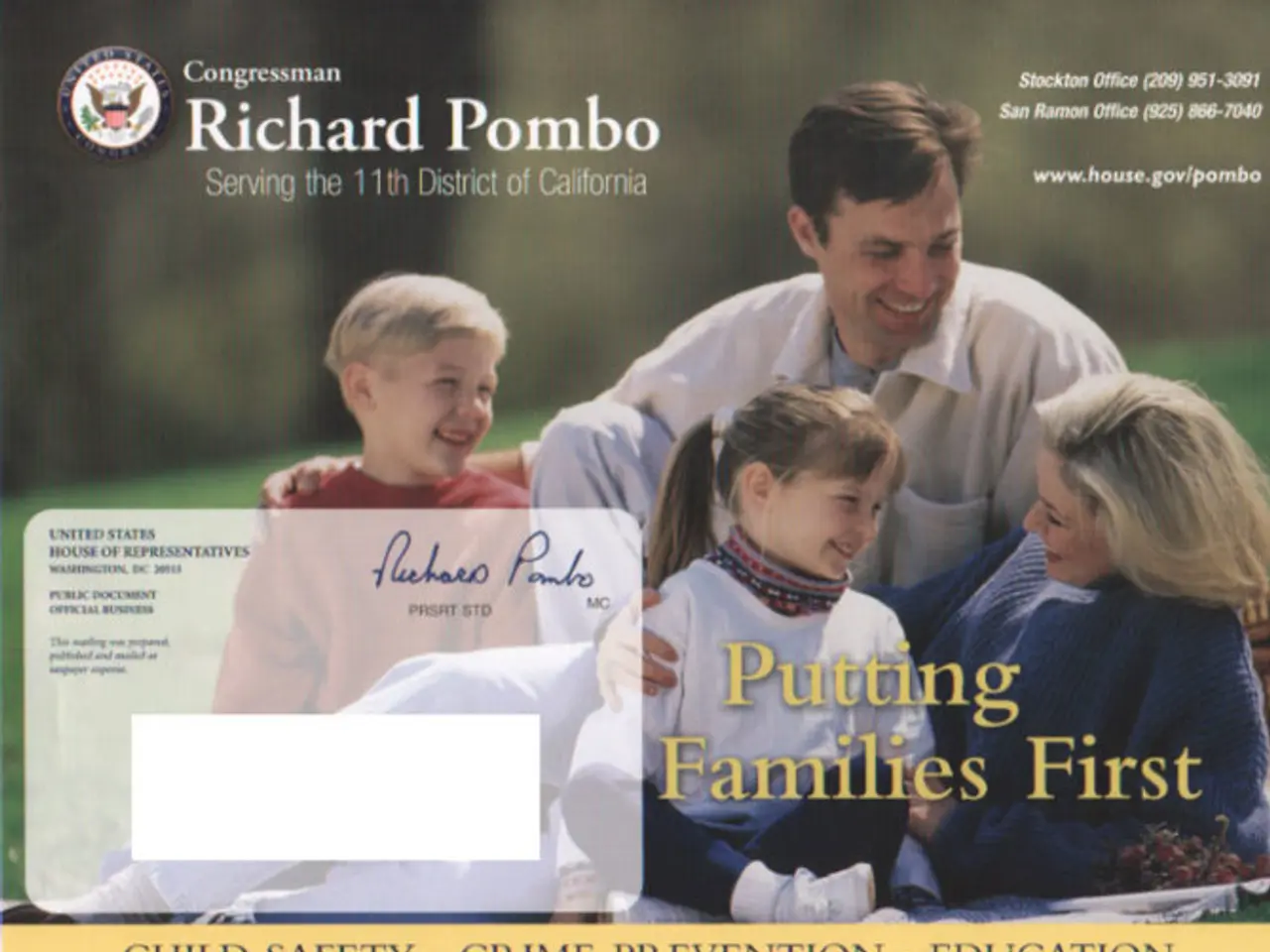Trump's Tariffs: A Contentious Impact on US Economy
U.S. Tariffs Dominate over Federal Reserve's Interest Rate Decision - U.S. President Trump's Tariffs Make Headlines as Key Focus in Federal Reserve Discourse
Has President Donald Trump's economic policy left a lasting impact on the US economy? With the Federal Reserve Wrestling Inflation as Economic Growth Falters, let's dive into the whirlwind of President Trump's tariffs and we weigh their consequences against the Fed's expectations.
The Brut Force of Tariffs
- Trump's Tariffs and Inflation: Trump's tariffs have functioned as a second tax on US households, amounting to almost $1,200 per household in 2025. This additional "tariff tax" inflates the cost of imported goods, contributing to soaring consumer prices and driving inflation.[1]
The Fed Vs. Trump's Tariffs: A Clash of Ideas
- Powell vs. Trump: The US Federal Reserve (Fed) is finding itself at odds with President Trump as Fed Chair Jerome Powell, whose term ends next year, spoke out about the impact of tariffs. Powell warned that consumers will bear the brunt of this economic disruption.
- Powell's Prescient Warnings: "Everyone I know is forecasting a significant increase in inflation in the coming months due to tariffs," Powell stated. "Someone has to pay for them."[2]
- The Fed's Stance: The Fed foresees growing economic instability due to Trump's tariffs, with increased inflation and slowed growth. "Higher tariffs are likely to push prices up and weigh on economic growth," Powell added.[2]
The Fed's Gamble: Interest Rates as the Curb on Inflation
- Interest Rate as a Stabilizer: The Fed relies on interest rates as its primary instrument to control inflation and support a healthy labor market. The current interest rate ranges from 4.25% to 4.5%.[3]
- The Fed's Moves: In previous years, the Fed has lowered interest rates twice, but no changes have been made in 2025 given the lingering uncertainty regarding Trump's tariffs' impact on the economy.[3]
Economic Forecasts and Trump's Interference
- The Fed's Predicted Slowdown: The Fed has revised its growth forecast, now projecting a GDP growth rate of 1.4% in 2025. This figure is a significant decline from the 1.7% growth rate projected in March and a stark reminder of the uncertainty surrounding the US economy.[3]
- The Fed's Inflation Expectations: The Fed expects the inflation rate to reach 3.0%, a significant increase from the 2.7% rate anticipated in March. The Fed's cautious approach reflects its concerns about the potentially damaging effects of Trump's tariffs.[3]
- Trump's Demands: Despite legal protections, President Trump persistently calls for lower interest rates to further stimulate the economy. Under increased political pressure from Trump, Federal Reserve independence remains a subject of ongoing debate.[3]
A Tenuous Relationship
Since Trump's inauguration in January, he has imposed high import duties on goods from various countries, escalating tensions between the US and international trade partners.[4]
While some believe Trump's tariffs will drive economic growth, the Fed remains skeptical. This conflict illustrates the complex nature of policymaking in the US and the delicate balance required to maintain growth, manage inflation, and ensure stability in the world's largest economy.
- Donald Trump
- Federal Reserve
- Tariffs
- Jerome Powell
- Inflation
- Central Bank
- US Economy
- United States
- Labor Market
- Federal Reserve System
- Republican
- Interest Rate
Enrichment Data:Trump's tariffs have created economic uncertainties due to increased inflation and the potential negative effects on growth. This dynamic contrasts with the more nuanced and balancing perspective of the Federal Reserve, which considers multiple factors when assessing tariff impacts on inflation and economic growth. The implementation of Trump's tariffs has led to an uneven impact on income distribution, with lower-income households suffering disproportionately from inflationary pressures and reduced purchasing power.[1][3][4]
[1] Federal Reserve Economic Data (FRED). (n.d.). Retrieved June 26, 2025, from https://fred.stlouisfed.org/
[2] Powell, J., & Mester, E. (2025, June). "Inflation, Expectations, and Monetary Policy in the Era of Pandemics." Retrieved June 26, 2025, from https://www.federalreserve.gov
[3] Congressional Budget Office. (2025, June). "The Macroeconomic Impact of President Trump's Tariffs." Retrieved June 26, 2025, from https://www.cbo.gov
[4] Peterson Institute for International Economics. (2025, May). "Assessing the President's Trade Policies: The Costs, Benefits, and Unintended Consequences." Retrieved June 26, 2025, from https://piie.com
- EC countries, as international trade partners, are potentially affected by President Trump's tariffs, creating tensions in global trade policy.
- The ongoing clash between President Trump's investing philosophy, focusing on tariffs, and the United States' central bank, the Federal Reserve, illustrates the complexities of policy-and-legislation and the importance of a balanced approach in managing the economy, employment policy, and the labor market.
- The calls for lower interest rates by President Trump to stimulate the economy, despite the cautious approach of the Federal Reserve, have sparked debates about business and politics, potentially impacting the independence and effectiveness of the central bank in addressing general news topics such as employment policy and inflation.







